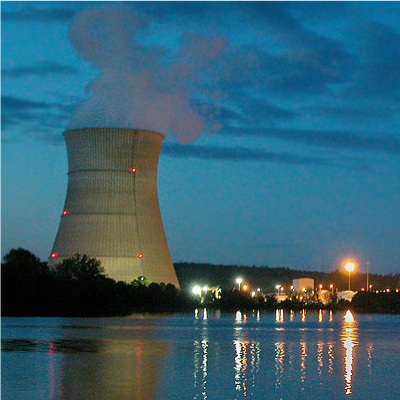Energy In-depth: U.S. Nuclear Commission Approves First Nuclear Reactor In 21st Century
by October 30, 2015 12:18 am 227 views

Editor’s note: Each Friday, Talk Business & Politics provides “Energy In-depth,” a round-up of energy and regulatory news in our email newsletter, which you can sign up to receive daily for free here.
U.S. NUCLEAR COMMISSION APPROVES FIRST NUCLEAR REACTOR IN 21ST CENTURY: The Nuclear Regulatory Commission has issued the Tennessee Valley Authority (TVA) a 40-year operating license for Watts Bar Unit 2 in Spring City, Tenn., the first U.S. reactor to operate since 1996 when the agency issued the license for Watts Bar Unit 1. The Watts Bar 2 decision means there are now 100 commercial reactors licensed to operate in the U.S.
The Watts Bar plant, about 60 miles southwest of Knoxville, now has two pressurized-water reactors. Receipt of the operating license marks the end of the construction on Watts Bar Unit 2 and allows operation through Oct. 22, 2055. According to TVA officials, the Watts Bar team is now preparing for initial fuel load which will require several weeks of work with ongoing NRC inspections and reviews, and readying all the key components and systems for operation. The unit is on schedule for operation in early 2016.
At the height of construction the project employed more than 3,500 people. Together with already-operating Unit 1, Watts Bar will produce nearly 2,300 megawatts of carbon-free energy. That’s enough to power 1.3 million homes in TVA’s service territory, officials said.
DENSO BUILDS FULL-SCALE TEST FACILITY FOR OIL-PRODUCING BACTERIA: Denso Corp. recently announced that it will build a large 20,000 square meter test facility for the culture of pseudochoricystis ellipsoidea, an oil-producing microalgae patented by the global auto supplier that is used to help reduce carbon emissions.
The new facility located in southern Japan will be used to perform verification tests needed to establish large-scale microalgae cultivation technologies required to improve biofuel production efficiency. The facility will start operations in April, 2016. Denso’s new facility will be one of the largest sites in Japan used for this kind of study. By 2018, the Japanese auto supplier aims to have established large-scale microalgae cultivation technologies.
MURPHY OIL POSTS $1.6 BILLION 3Q LOSS ON LOW OIL PRICES, CONTINUES COST-CUTTING PROGRAM: Murphy Oil Corp. on Wednesday posted a huge loss of nearly $1.6 billion in the third quarter as depressed oil and gas prices cast a broad shadow across the Arkansas oil giant’s exploration and production operations. For the period ended Sept. 30, Murphy reported a third quarter loss of $9.26 per share, or $1.59 billion, compared to net income of $45 million, $1.51 per share, in the same period of 2014.
U.S. GEOLOGICAL SURVEY: OKLAHOMA EARTHQUAKES CAUSED BY FRACKING ACTIVITY – The rate of earthquakes has increased sharply since 2009 in the central and eastern United States, with growing evidence confirming that these earthquakes are primarily caused by human activity, namely the injection of wastewater in deep disposal wells for fracking, according to a new study by the U.S Geological Survey.
The study uses archival reports at the Library of Congress and drill permit records showing the location of wells from the Oklahoma Corporation Commission to track how wastewater injection evolved over time, with an increase around 1950 due to a rise in secondary oil recovery in response to increasing depletion of fields.
The complete research paper, “A Century of Induced Earthquakes in Oklahoma?,” was released online in the journal Bulletin of the Seismological Society of America.
EPA APPROVES NEW MEXICO HAZE PLAN: The U.S. Environmental Protection Agency (EPA) proposed to approve New Mexico’s plan to make progress on reducing regional haze to meet federal Clean Air Act requirements. All wilderness areas included in the plan have already shown some improvement in visibility, one of the major goals of the federal regional haze rule.
The Clean Air Act’s regional haze rule requires states to make progress toward achieving natural visibility conditions in some of the nation’s most treasured wilderness areas. States must submit plans for achieving these progress goals by reducing harmful emissions of nitrogen oxides, sulfur dioxide, and particulate matter. EPA is proposing to approve New Mexico’s plan because it identifies the controls to be applied, outlines the compliance timeframe, and shows potential further reduction in emissions through additional pollution controls.
The EPA published proposed guidelines in the Federal Register in April that rejected a portion of the Arkansas Department of Environmental Quality’s (ADEQ) haze plan for the state, called Best Available Retrofit Technology, or BART.
